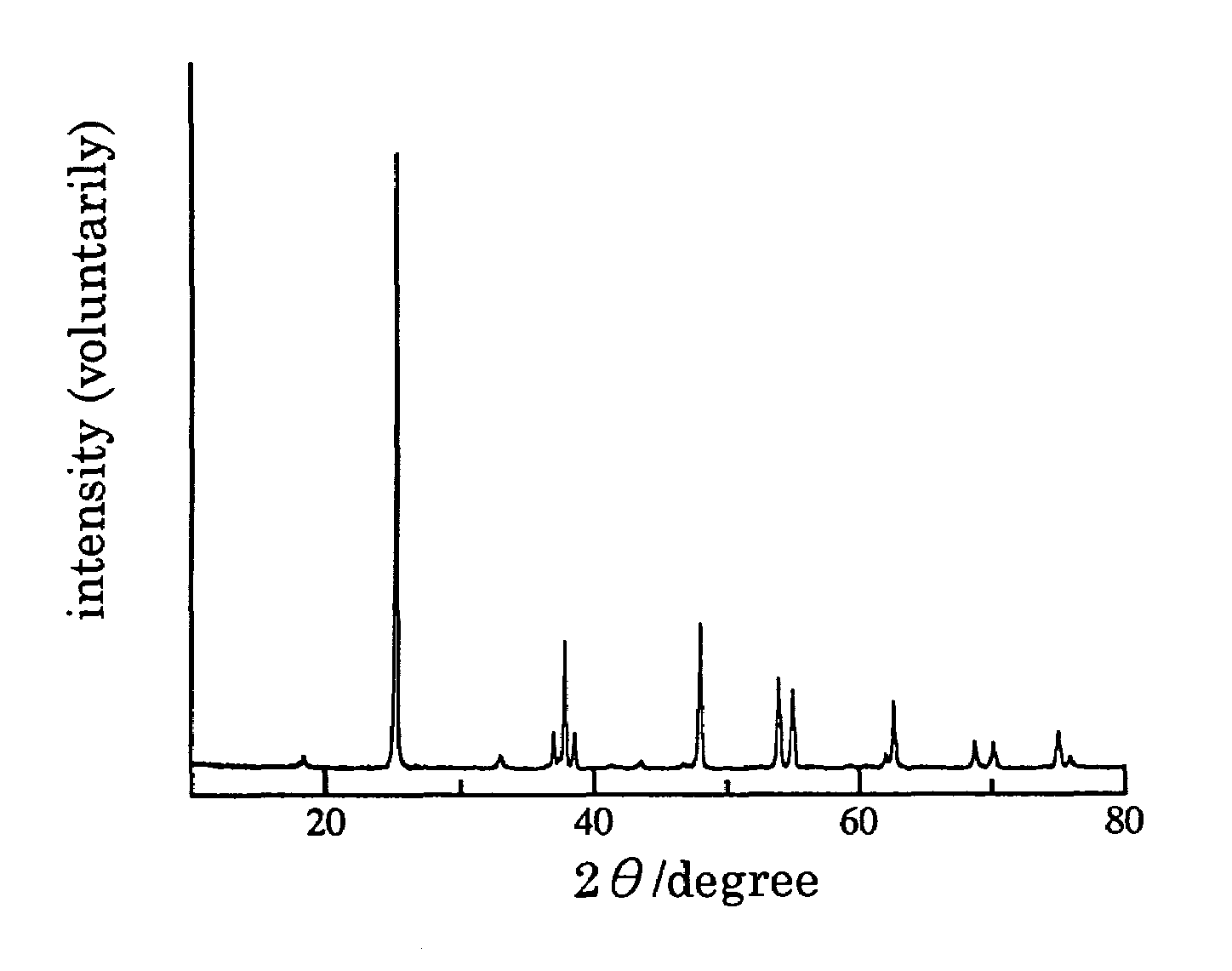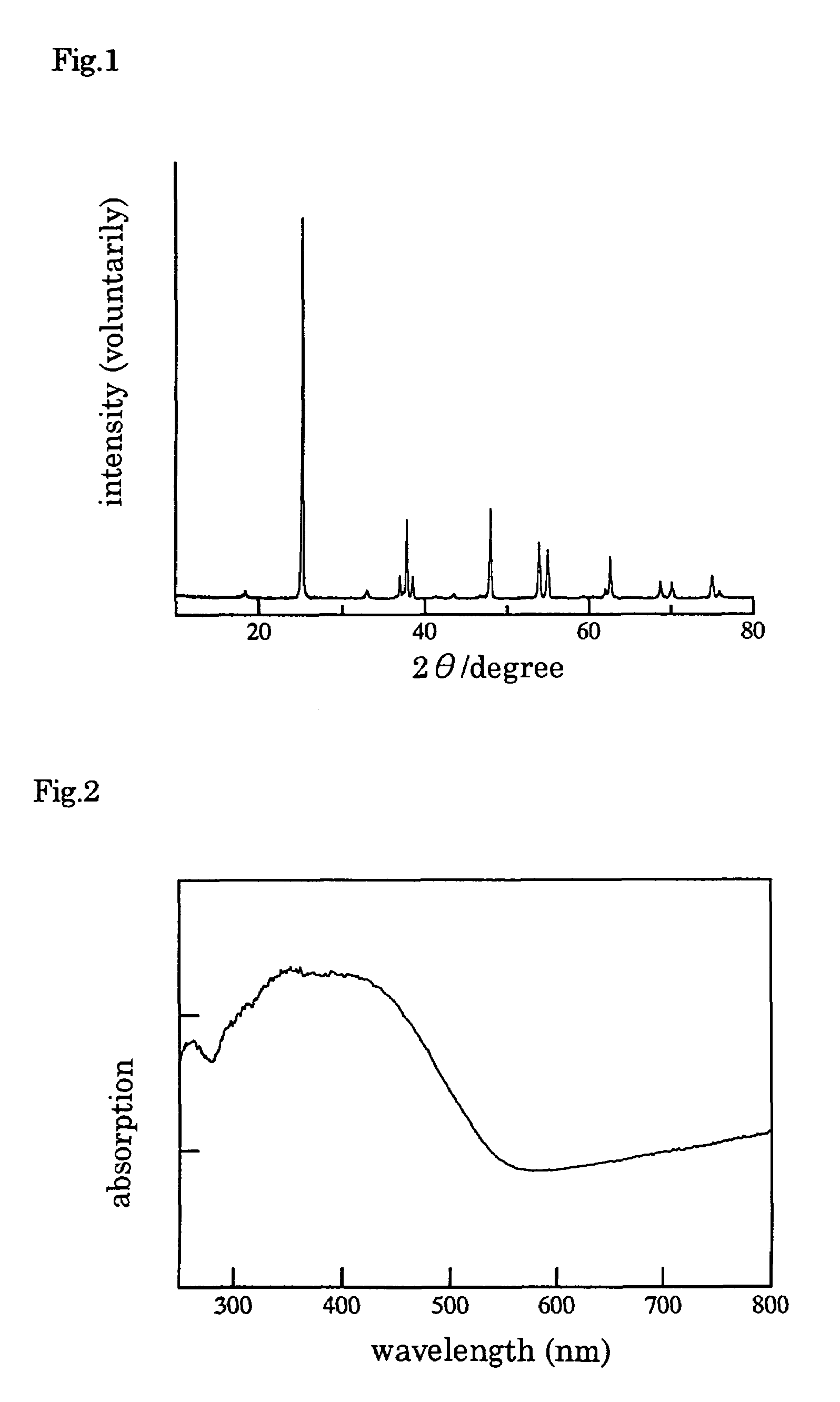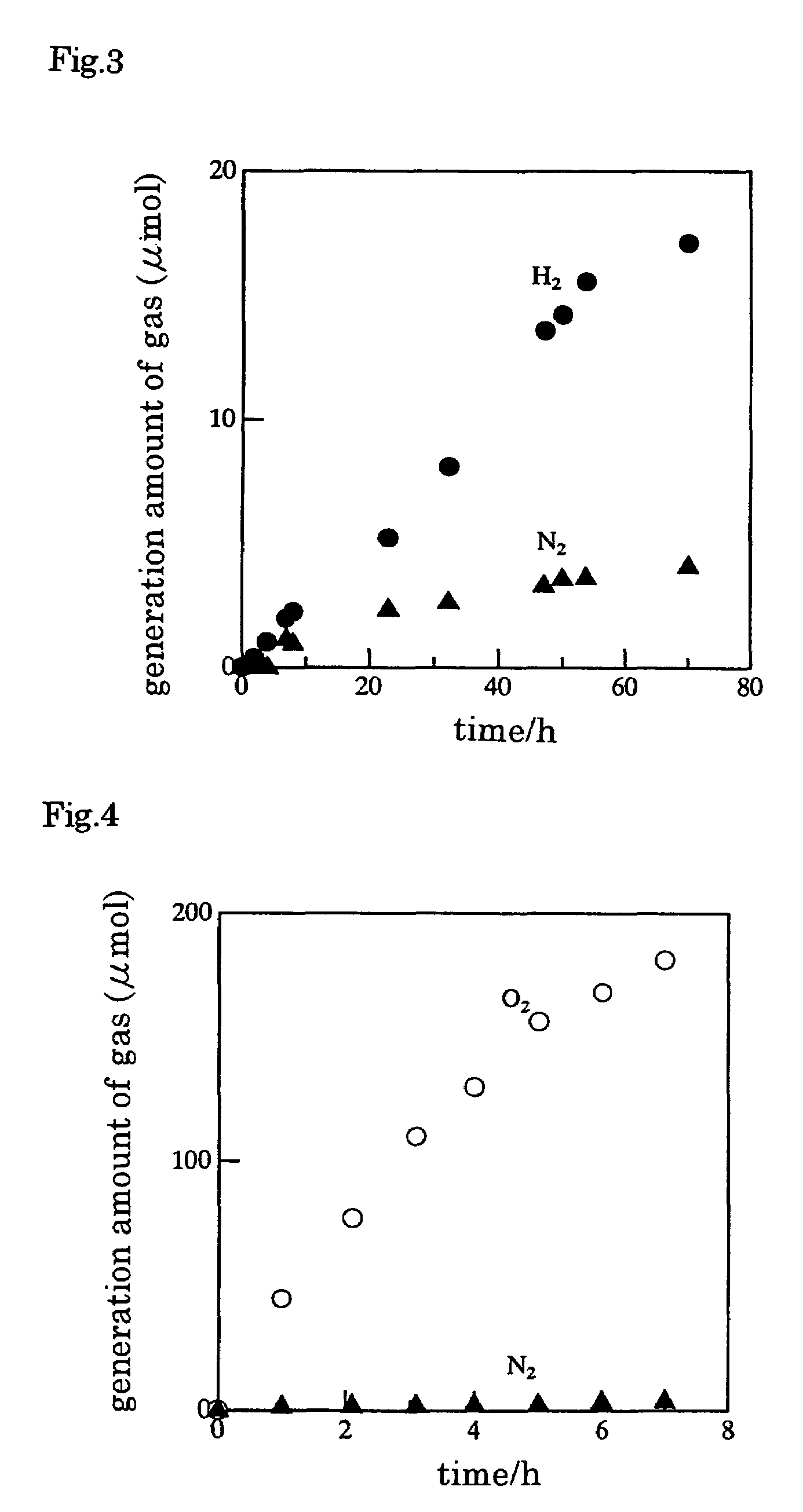Photocatalyst comprising titanium fluoride nitride for water decomposition with visible light irradiation
a technology of titanium fluoride nitride and photocatalyst, which is applied in the direction of catalyst activation/preparation, metal/metal-oxide/metal-hydroxide catalyst, etc., can solve the problems of no photo-catalyst to meet above mentioned requirements, difficult to obtain a stable compound among the compound containing ti(iv), and the responsibility for visible light of the material is too low, so as to suppress the reducing reaction reaction
- Summary
- Abstract
- Description
- Claims
- Application Information
AI Technical Summary
Benefits of technology
Problems solved by technology
Method used
Image
Examples
example 1
[0046]As the first step, diammonium hexafluorotitanate ((NH4)2TiF6) and ammonium chloride (NH4Cl) were mixed by 1:1 molar ratio. Then the mixture was contained into a golden tube and the opening was sealed by welding. This golden tube was baked at 400° C.(673K) in an electric furnace for 12 hours. After baking, synthesis by nitration was carried out under ammonium stream containing oxygen (ammonia flow rate: 0.2 dm3·min−1, oxygen flow rate: 1 cm3·min−1) at the temperature of 600° C.(873K) for 12 hours.
[0047]Loading of platinum on said material was carried out as follows. Namely, 0.00357 dm3 of 0.1 mol·0.1 moldm−3 tetraamminedichloro platinum Pt(NH4)4Cl2 solution (Pt 3 wt %) was impregnated to 0.3 g of said material on a water bath and water was evaporated, then reduced by hydrogen at 300° C.(573K) for 2 hours.
[0048]The X ray diffraction spectrum of the material after baking are shown in FIG. 1. All diffraction peaks in FIG. 1 are belonging to TiNF (refer to Paper: Angew. Chem. Int. ...
example 2
[0051]As the first step, diammonium hexafluorotitanate ((NH4)2TiF6) and ammonium chloride (NH4Cl) were mixed by 1:1 molar ratio. Then the mixture was contained into a glass tube, vacuumed and the opening was sealed by welding. This glass tube was baked at the temperature of 400° C. (673K) in an electric furnace for 12 hours. After baking, synthesis by nitration was carried out under ammonia stream containing oxygen (ammonia flow rate: 0.04 dm3·min−1, oxygen flow rate: 0.2 cm3·min−1) at the temperature of 500° C.(773K) for 10 hours. Loading of platinum on said material was carried out as follows. Namely, 0.00357 dm3 of 0.1 moldm−3 tetraamminedichloro platinum Pt(NH4)4Cl2 solution (Pt 3 wt %) was impregnated to 0.3 g of said material on a water bath and water was evaporated, then reduced by hydrogen at 300° C.(573K) for 2 hours.
[0052]The X ray diffraction spectrum of the material after baking are shown in FIG. 5. All diffraction peaks in FIG. 5 are belonging to TiNF (referred to afore...
example 3
[0055]As the first step, diammonium hexafluorotitanate ((NH4)2TiF6) and ammonium chloride (NH4Cl) were mixed by 1:1 molar ratio. Then the mixture was contained into a glass tube, vacuumed and the opening was sealed by welding. This glass tube was baked at 400° C.(673K) in an electric furnace for 12 hours. After that, further baked at 300° C.(573K) under inert gas stream for 10 hours, then synthesis by nitration was carried out under ammonium stream containing oxygen (ammonia flow rate: 0.2 dm3·min−1, oxygen flow rate: 1 cm3·min−1) at the temperature of 600° C.(873K) for 15 hours. Loading of platinum on said material was carried out as follows. Namely, 0.00357 dm3 of 0.1 moldm−3 tetraamminedichloro platinum Pt(NH4)4Cl2 solution (Pt 3 wt %) was impregnated to 0.3 g of said material on a water bath and water was evaporated, then reduced by hydrogen at 300° C.(573K) for 2 hours.
[0056]The X ray diffraction spectrum of the material after baking are shown in FIG. 9. All diffraction peaks i...
PUM
| Property | Measurement | Unit |
|---|---|---|
| temperature | aaaaa | aaaaa |
| temperature | aaaaa | aaaaa |
| band gap energy | aaaaa | aaaaa |
Abstract
Description
Claims
Application Information
 Login to View More
Login to View More - R&D
- Intellectual Property
- Life Sciences
- Materials
- Tech Scout
- Unparalleled Data Quality
- Higher Quality Content
- 60% Fewer Hallucinations
Browse by: Latest US Patents, China's latest patents, Technical Efficacy Thesaurus, Application Domain, Technology Topic, Popular Technical Reports.
© 2025 PatSnap. All rights reserved.Legal|Privacy policy|Modern Slavery Act Transparency Statement|Sitemap|About US| Contact US: help@patsnap.com



